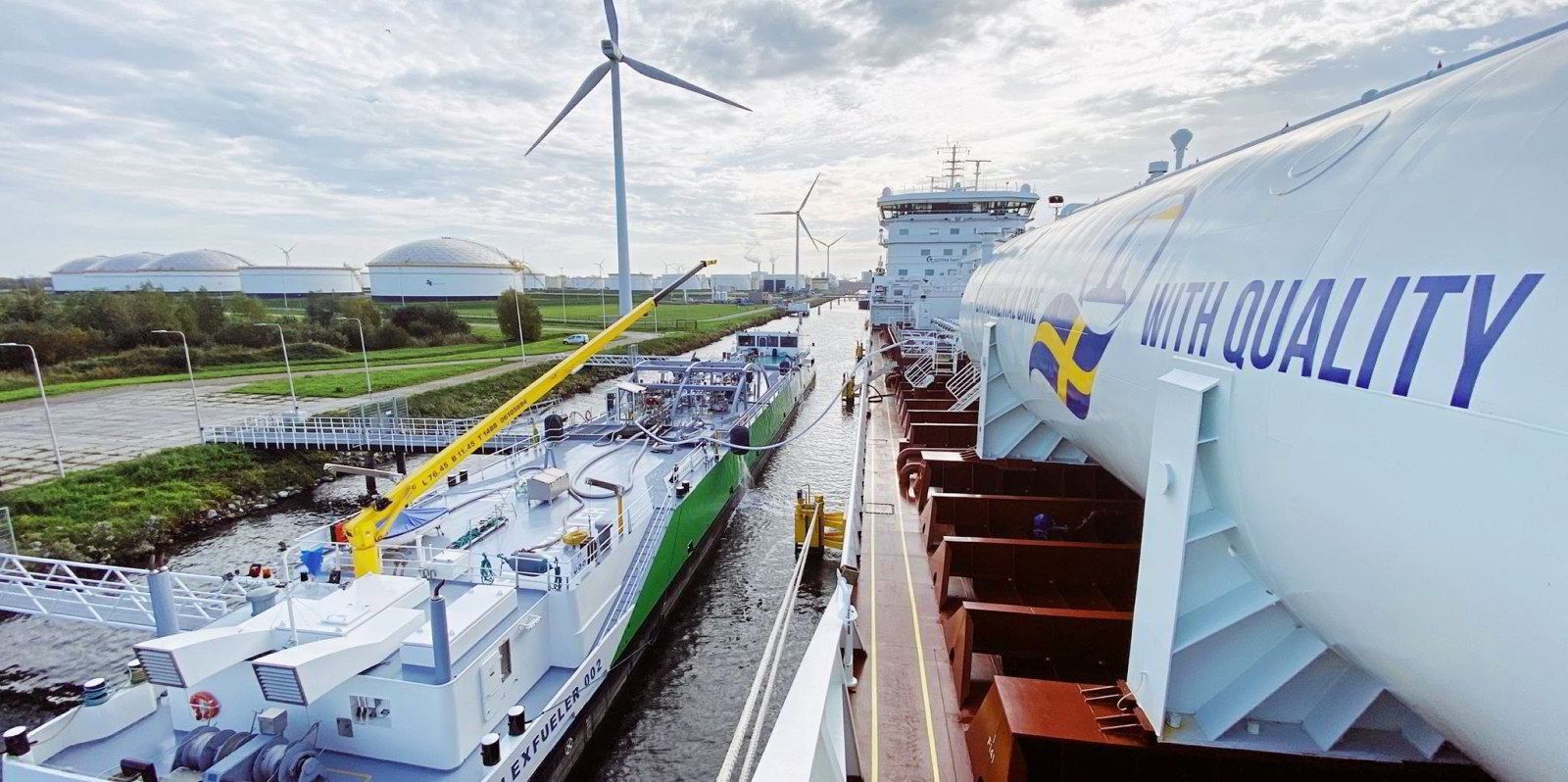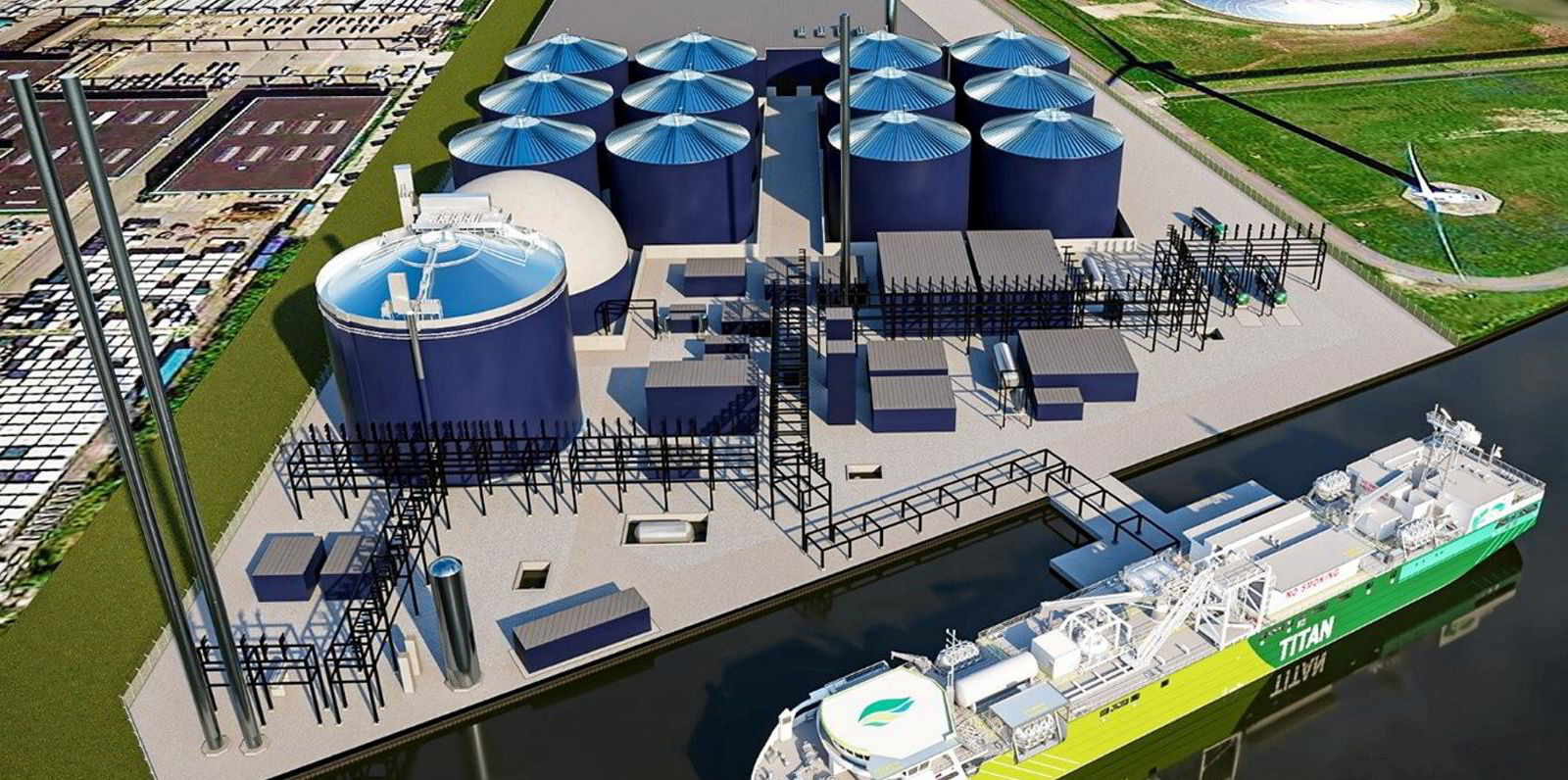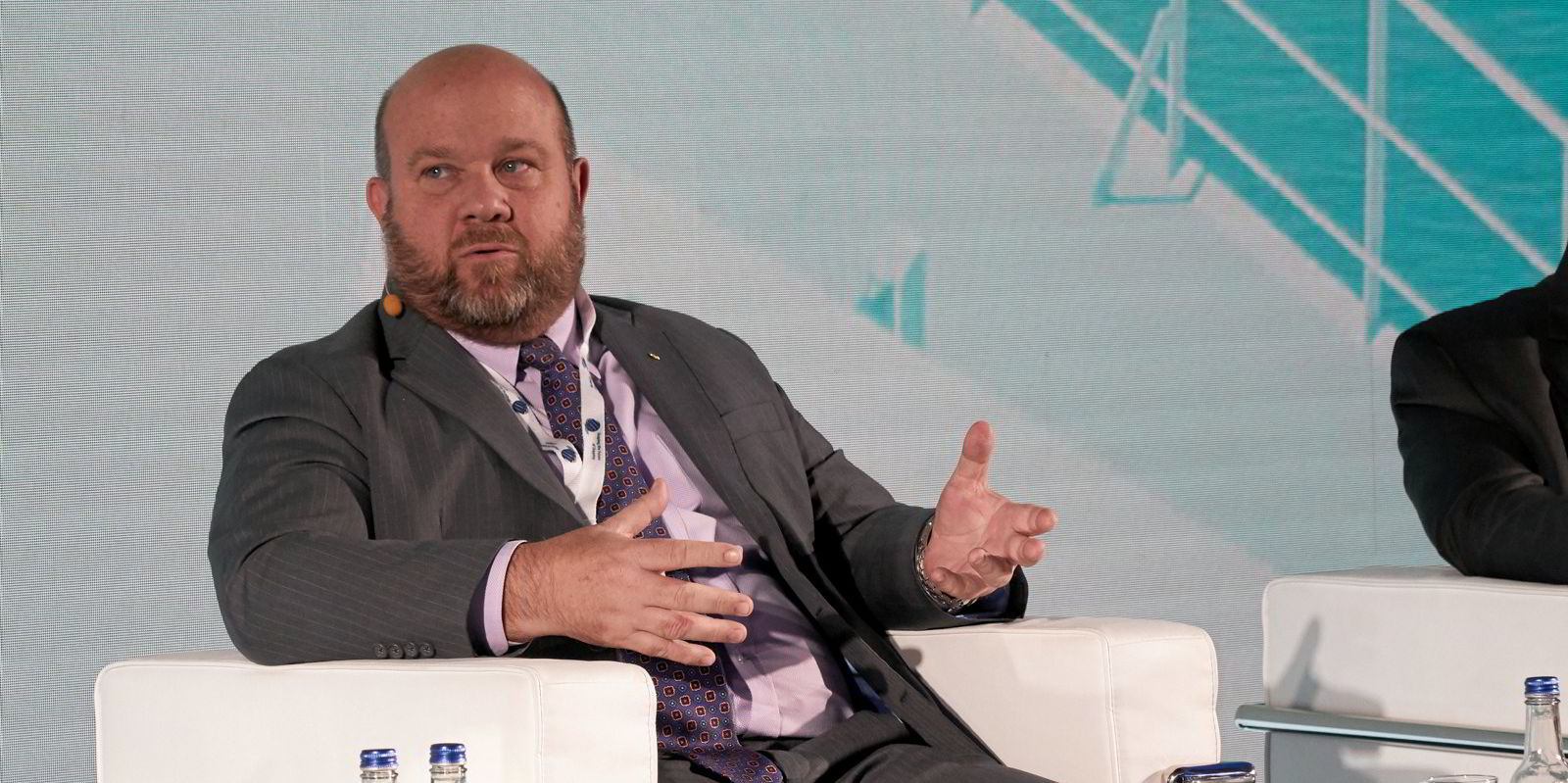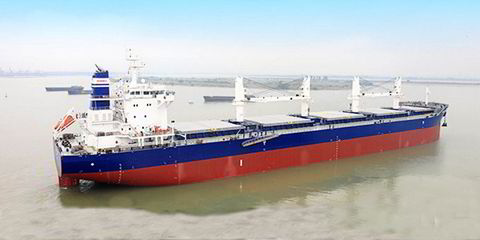Shipowner customers are starting conversations about term deals that could secure volumes of bio-LNG for when tougher European carbon regulations kick in at the end of this decade.
Shipping’s take-up of bio-LNG — also referred to as liquefied biomethane or LBM — remains low, but those working with it report that owners are becoming “very aware” that their need for the product will probably increase through this decade.
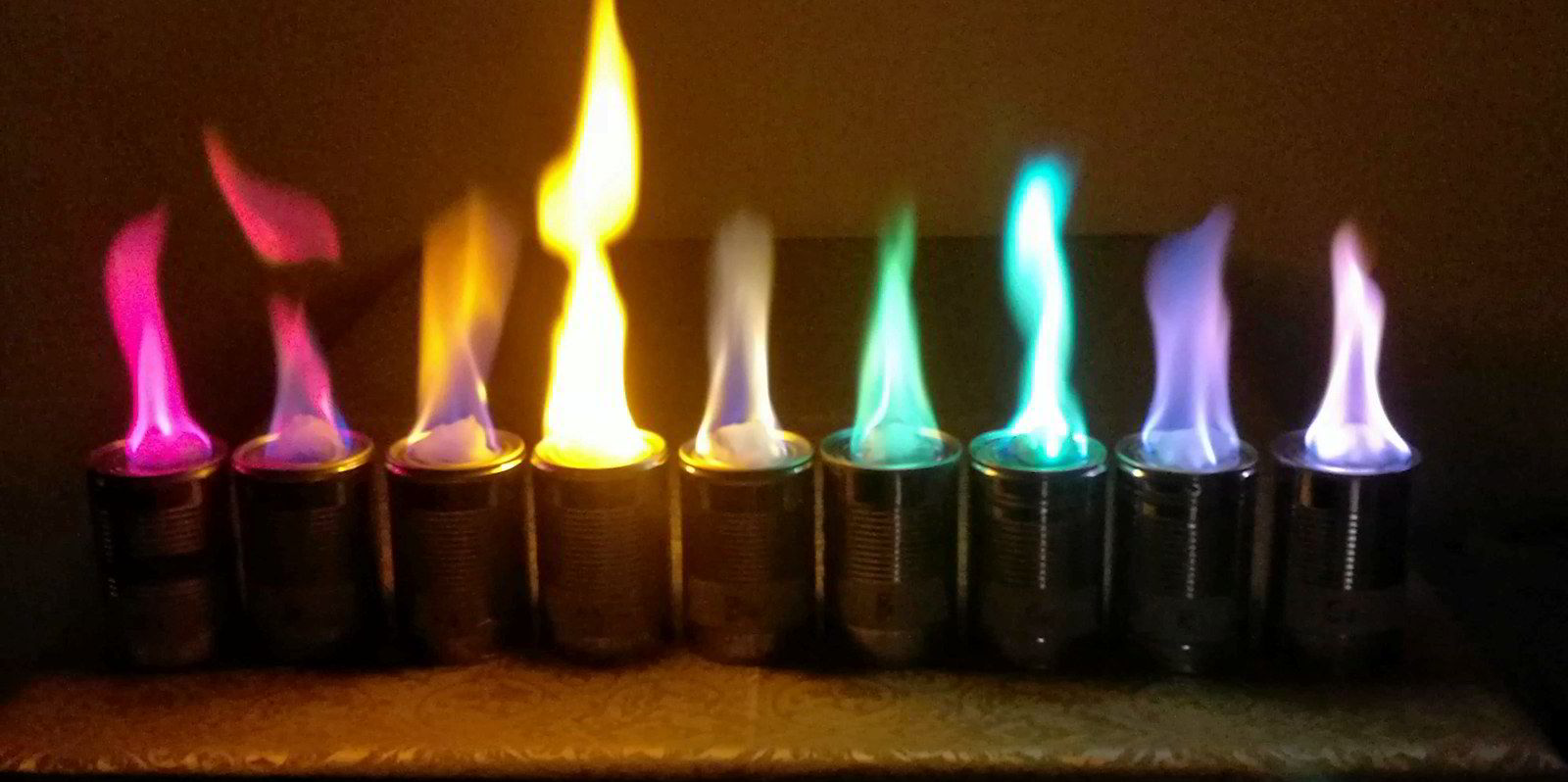
This story is part of a series of articles looking at the future of fuels in shipping.
Click here to read the full report
But they will also be competing with other sectors for the product.
Caspar Gooren, renewable fuels director with fuel supplier Titan, sees demand for LBM picking up from next year with shipping’s inclusion in the European Union Emissions Trading System.
He admits that at present pricing it would be cheaper to buy the certificates needed under the trading system for every tonne of CO2 emitted than pay for LBM.
But Gooren said that adding bio-LNG to the fuel mix also allows owners to reduce their own CO2 emissions and offer a “green” supply chain claim to customers.
Consultant LansdowneMoritz said the real demand for bio-LNG will begin with the approach to 2030 when FuelEU Maritime legislation introduces a requirement for shipping companies to reduce their emissions intensity of fuel burned in the EU and for 50% of fuel burned on the voyage into and out of the region.
“The target relates to fuel GHG [greenhouse gas] intensity and cannot be met by technical and operational measures,” the consultant said. “By 2030, the reduction target is 6% and by this point, we see that there will be a big increase in bio-LNG demand as long as bio-LNG pricing is competitive with bio-diesel.
“Shipping companies which are exposed to spot bio-LNG prices towards the end of the decade risk having to pay very high prices.”
The likely volumes of bio-LNG that could become available remain limited and figures are slightly sketchy.
A commonly quoted benchmark is that total grid-connected bio-methane production in Europe is about 3.5bn cbm, which equates to around 2.7 million tonnes per annum of bio-LNG.
Big money
LansdowneMoritz flagged up the huge investment in new bio-methane production facilities, with the EU targeting 35bn cbm of production by 2030, equivalent to 25 mtpa of bio-LNG.
“This will be difficult to achieve but it looks possible to get close to this target,” the company said.
- Bio-LNG or liquefied biomethane is considered nearly carbon-neutral because it is produced from organic waste flows, such as organic household and industrial waste, manure and sewage sludge.
- Synthetic LNG or e-LNG is renewable when e-methane is produced using renewable electricity and CO2, either from the air or renewable biomass.
- Both are identical to fossil LNG but are considered renewable as their upstream CO2 inputs make them carbon neutral on a well-to-wake basis.
The consultant pointed out that shipping will have to compete for this supply with other customers. But it added: “We do not see a reason why the shipping sector couldn’t secure 5%-10% of European bio-methane production by 2030, which would be 1.25 mtpa to 2.5 mtpa of bio-LNG, perhaps equivalent to 20%-40% of European marine LNG demand.”
Industry lobby group SEA-LNG said its members are prepared to deliver bio-LNG bunkers in 70 ports in Asia, Europe and North America.
SEA-LNG chief operating officer Steve Esau said what matters are the volumes of biomethane — or in future e-methane or synthetic methane — production that can be injected into the gas pipeline system.
Esau and others point to mass balance regulations being implemented under the EU that allow these to be taken as bio-LNG at LNG import terminals and used for bunkering. “The important number is grid-connected biomethane capacity,” he said.
Thinking ahead
Nordic energy company Gasum has been investing heavily in biogas production, supplying bio-LNG in the Nordics — more recently extending this to Germany and Iceland. The company is currently able to liquefy about 300,000 tonnes per annum of LBM at the Risavika plant in Norway, where it is a major capacity holder.
Gasum vice president of maritime Jacob Granqvist said product availability is “quite good” in relation to the number of LNG-fuelled vessels currently trading.
He thinks owners will start to blend in more fuels as European regulations kick in but does not believe they will be willing to blend in much more than is needed.
Although regulations have still to be finalised, under FuelEU owners are also expected to have the option of “pooling” their vessels. In this way, if they run one ship on a high percentage of bio-LNG or even e-LNG, they can pool this with the emissions of other conventionally fuelled ships, allowing them to benefit from the savings.

Granqvist believes availability will outstrip demand in 2024. He commented that shipping companies are generally quite conservative and “reactive” to regulatory change, with few planning ahead.
The percentages customers are using as drop-in fuels vary.
Granqvist pointed to Viking Line, which gives customers an option to decarbonise their cargo, or passengers on their voyage, and Finnish ferry operator Wasaline, which has introduced “Green Corridor Fridays” when its 800-passenger ropax Aurora Botnia (built 2021) runs 100% on bio-LNG every Friday.
These are voluntary reductions. The companies behind them are investing their own money in decarbonisation to give themselves a competitive edge. For larger shipowners, the usage is more on a pilot basis at present, he said.
The difference will really come when owners can no longer meet decarbonisation targets by improving vessel efficiencies and need to start addressing the fuel they are using.
Granqvist’s message is that bio-LNG is available for decarbonisation and synthetic versions of the fuel will be too, although “not right now”.
The new mindset owners will need to embrace is not how cheaply the synthetic of greener versions of fuels can be produced, but the cost of the penalty for not using them, he said.
- Some observers feel the “LNG” tag in bio-LNG — a term initially used in the trucking market — is confusing the understanding of the product, which is not derived from natural gas.
- For marine, the product is also being marketed as liquefied bio-methane.
- “Liquefied biogas” is also used. Biogas has traditionally been used locally to produce heat and electricity. But many biogas plants are being upgraded and converted into biomethane plants so that the gas they produce can be fed into the grid.
- There is also a debate about whether the fuel should be rebranded. Some players ask why other alternative fuels such as methanol and ammonia have simply been tagged with a “green” prefix.
